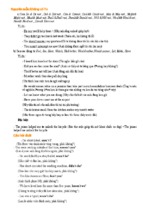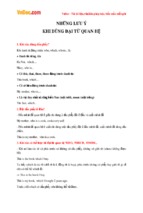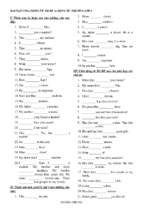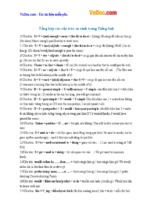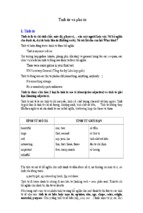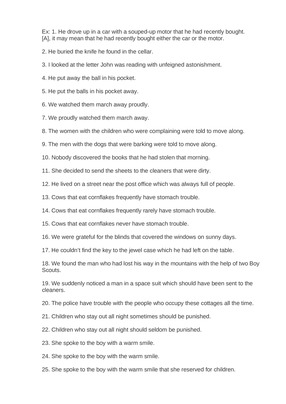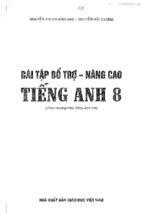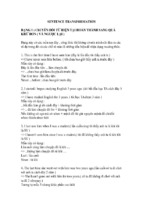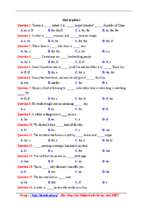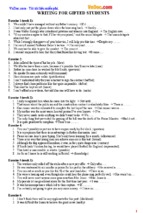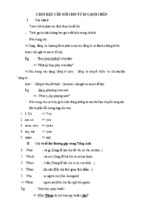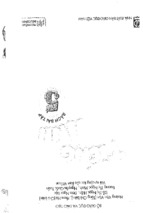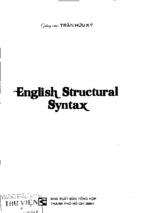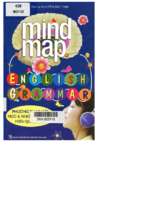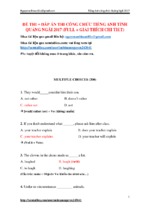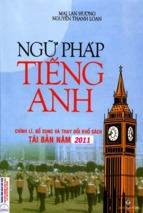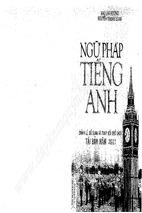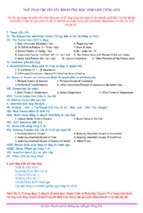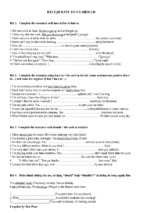Contents
Cover
About the Book
About the Author
Dedication
Title Page
Introduction
1. Basic Grammar
nouns
verbs
adjectives
adverbs
pronouns
articles
prepositions
conjunctions
interjections
2. Punctuation
full stops
commas
question marks
exclamation marks
colons
semicolons
apostrophes
quotation marks
brackets / parentheses
hyphens
dashes
ellipses
solidi
3. Spelling
homonyms
common confusions
common misspellings
preferred spellings
pronunciations
4. Beyond the Basics
from ‘accents’ to ‘who or whom’
5. To America and Beyond
English in America
Australia
New Zealand
South Africa and Canada
6. Reading and Writing
literary terms and other stuff
Answers
Acknowledgements
Credits
Copyright
About the Book
Agitated about apostrophes?
Struggling with spelling?
Dithering over dangling participles?
Stumped by the subjunctive?
Relax. Help is at hand…
For native English speakers who realise that there is more to good English than meets the eye,
but don’t know where to start; for parents struggling to explain the finer details to their kids;
and for English-language students everywhere … this is the only book you need.
Grammar for Grown-Ups guides you through the perils, pitfalls and problematic aspects of the
English language, with fun test-yourself sections all the way.
About the Author
Katherine Fry and Rowena Kirton have both worked in publishing for more years than they
care to think about. Katherine is a freelance editor mostly working for Random House,
Rowena is a managing editorial director at Random House. They live in London.
For
Minne and Lionel
Michael, Tessa, Zachary and Daisy
Enid and John
Andrew, James and William
Introduction
Grammar for Grown-Ups is an accessible, light-hearted and straightforward guide to good
English in the twenty-first century, covering grammar, punctuation, spelling, common errors
and not so common errors. It is for people who have forgotten the grammar they were taught
at school, for those who weren’t taught it in the first place and for English-language students,
because, believe it or not, there is more to life and literature than a rushed-off email and
textspeak.
Some of the various existing tomes on the subject often seem to be either too oldfashioned, heavy-handed, pompous and dry, or too jokey, incomplete, occasionally even
incomprehensible. This book is not a bossy rant, but hopefully shows that good grammar,
punctuation and spelling are more important than many people appear to think these days. In a
fast-paced world, when communications jostle for attention, if your letter, email or website
page is full of errors, a reader won’t waste his or her time trying to work out what you’re
trying to say – it will just be binned, deleted or clicked off along with the annoying flashing
ads.
Clearly laid out, Grammar for Grown-Ups comprises six chapters. Chapter 1 focuses on
basic grammar; 2 on punctuation; 3 on spelling; 4 on not so basic grammar and tricky areas;
5 moves across the Atlantic to take in US English and then hops over to Australia, New
Zealand, South Africa and Canada; and Chapter 6 delves into a more literary field. Dotted
here and there are exercises – some very simple, some rather less so – to see if things have
sunk in (and answers are at the back of the book, in case they haven’t).
Language is constantly developing, and while some rules should remain hard and fast,
some may be bent and once in a while even broken – when you know what you’re doing …
K F & R K
September 2012
1 | Basic Grammar
The English language has a deceptive air of simplicity; so have some little frocks;
but they are both not the kind of thing you can run up in half an hour with a machine.
Dorothy L. Sayers
I don’t want to talk grammar, I want to talk like a lady.
Eliza Doolittle in George Bernard Shaw’s Pygmalion
JUST AS DELIA thought it no bad thing to go back to the basics of cooking by showing us to
how to boil water (or maybe it was an egg), so it is no bad thing to go back to the basics of
grammar.
There are nine types of words that make up English grammar: nouns, verbs, adjectives,
adverbs, pronouns, articles, prepositions, conjunctions and interjections.
Nouns
A noun is a word used to identify people, places and things. There are four types of nouns:
proper, common, abstract and collective.
Proper nouns always start with a capital, or upper-case, letter – and so are easy to spot.
Proper nouns include names of specific people, places and things – like William Shakespeare
and Katie Price, London and Scunthorpe, the Black Sea and the Great Dismal Swamp, the Taj
Mahal and Wembley Stadium, the Houses of Parliament and Holyrood, September and
Thursday.
Common nouns refer to all other types of people, places and things, and start with a small, or
lower-case, letter – like ‘man’, ‘woman’, ‘city’, ‘dead end’, ‘water ’, ‘mud’, ‘building’,
‘folly’, ‘calendar ’, ‘autumn’, ‘pedant’, ‘twit’.
Abstract nouns denote an idea, a feeling or a thought, rather than a physical object or thing,
something that can’t be seen or touched – such as ‘anxiety’, ‘despair ’, ‘panic’, ‘pride’,
‘relief’.
Collective nouns are groups of things – ‘army’, ‘audience’, ‘choir ’, ‘company’, ‘couple’,
‘family’, ‘government’, ‘group’, ‘herd’, ‘pair ’, ‘panel’, ‘parliament’, ‘pride’, ‘team’. They
can also be the name (a proper noun) of a company, a team, etc. – Square Peg, Manchester
City.
Here are 20 nouns. Are they proper, common, abstract or collective?
1. bully
2. telling-off
3. York
4. gaggle
5. Rose
6. rose
7. Bill Clinton
8. bill
9. happiness
10. apple
11. flock
12. tolerance
13. Kew Gardens
14. crowd
15. weariness
16. Stonehenge
17. litter
18. teapot
19. luck
20. murmuration
Proper or common?
So those are the basic noun categories, but some, of course, encroach on each other. Why
does a word like ‘conservative’ sometimes have a capital letter, and sometimes a small letter?
The former, ‘Conservative’, relates to the British political party, while the latter,
‘conservative’, means reluctant to change, conventional. Similarly, ‘Parliament / parliament’
(the UK legislature / any other legislature), ‘Bible / bible’ (the holy book / a book considered
the authority on a particular subject), ‘Catholic / catholic’ (relates to Roman Catholicism /
broad-minded – don’t get the two muddled up …), ‘God / god’ (the Almighty / all those
Greeks and Romans, or a particularly idolised or adored person). Religions are always upper
case, even for non-believers.
Although ‘river ’, ‘valley’, ‘mountain’, ‘desert’, ‘road’, ‘street’, ‘doctor ’, ‘king’,
‘president’, ‘war ’, etc., are common nouns, they should be capitalised when attached to a
name: River Thames, Silicon Valley, Atlas Mountains, Gobi Desert, King’s Road, Oxford
Street, Doctor Who, King Kong, President Bush, Iraq War, etc., etc. Similarly, when using a
title as a term of address without a name attached, keep the title upper case – ‘Well, General,
you think this war is a good idea?’ ‘So you won’t give me liposuction, Doctor, you just think I
should go on a diet?’ ‘I’ll do the washing-up, Mum.’ On the other hand, ‘sir ’ and ‘madam’
should be lower case.
With points on the compass – north, south, east and west – things get a little murkier.
Those points themselves should be lower case, but when attached to continents and countries,
they take a capital – North America, South Korea, East Africa, West Indies. A named
geographical area also has a cap – North Yorkshire, South Dakota, East Anglia, West Sussex.
For a more general hint at a direction, though, stick to lower case: north Belfast, south
London, west of England (although it is the West Country – specific area, see previous
sentence). Unless referring to ‘the South’, meaning the southern states of America, ‘the South’
or ‘the south’, etc., as a geographical area can be either upper or lower case – it’s a matter of
personal choice. Which looks better: ‘She lives in the North’ or ‘She lives in the north’?
There are some common nouns that were originally proper nouns, but have become so
ubiquitous – or ‘common’ – they are now generic terms and lower case, words such as
‘aspirin’, ‘biro’, ‘escalator ’, ‘styrofoam’, ‘tarmac’, ‘yo-yo’. However, ‘Kleenex’, ‘Sellotape’,
‘Thermos’, ‘Tupperware’, while equally generic, retain that capital letter – for the moment …
Just to complicate things a little bit more, ‘Hoover ’, ‘Google’, ‘Rollerblade’, ‘Tipp-Ex’ and
‘Xerox’ are nouns, but ‘hoovering’, ‘googling’, ‘rollerblading’, ‘tippexing’ and ‘xeroxing’
are verbs.
Singular and plural
Singular means just one thing – ‘ape’, ‘bird’, ‘cat’; plural means more than one thing –
‘apes’, ‘birds’, ‘cats’. Plurals usually end with ‘s’, or ‘es’ if the singular noun ends with ‘sh’,
‘ch’ and, sometimes, ‘o’ – ‘thrushes’, ‘witches’, ‘potatoes’. If the singular ends with a ‘y’, the
plural ends with ‘ies’ – ‘bellies’, ‘lorries’, ‘tellies’. (But ‘ey’ endings, as in ‘trolley’, follow
the usual plural rule and add just ‘s’, so ‘trolleys’, not ‘trollies’.) A singular noun ending in
‘f’ or ‘fe’ usually ends ‘ves’ in the plural form – ‘leaf / leaves’, ‘scarf / scarves’, ‘thief /
thieves’ (although they are always ‘roofs’ and ‘woofs’), ‘life / lives’, ‘wife / wives’. However,
as so often with the English language, there are exceptions, and these are called irregular
plurals, such as ‘child / children’, ‘foot / feet’, ‘person / people’, ‘tooth / teeth’, ‘woman /
women’.
Making things even more irregular are those words which are the same in both singular
and plural – like ‘food’, ‘sheep’, ‘money’, ‘series’, ‘deer ’, ‘offspring’.
Then there are the nouns which only have a plural form – like ‘goggles’, ‘binoculars’,
‘gallows’, ‘pants’, ‘pyjamas’.
And then there are nouns which were once plural but are now taken as singular – like
‘candelabra’, ‘confetti’, ‘data’, ‘graffiti’, ‘ravioli’, ‘spaghetti’.
Here is a helpful list of some irregular plurals (in English anyway – though a pedant
might say that they are not irregular in their language of origin):
alumnus / alumni
analysis / analyses
antenna / antennae or antennas
appendix / appendices or appendixes
axis / axes
bacterium / bacteria
basis / bases
cactus / cacti
chateau / chateaus or chateaux
criterion / criteria
curriculum / curricula or curriculums
diagnosis / diagnoses
ellipsis / ellipses
formula / formulae or formulas
fungus / fungi
hoof / hoofs or hooves
hypothesis / hypotheses
index / indexes or indices (latter only in maths)
larva / larvae
louse / lice
matrix / matrices or matrixes
medium / media or mediums (though that sounds a bit spooky)
memorandum / memoranda
narcissus / narcissi or narcissuses
neurosis / neuroses
nucleus / nuclei
oasis / oases
octopus / octopuses, not octopi (affected)
ox / oxen
parenthesis / parentheses
phenomenon / phenomena
rostrum / rostra or rostrums
stadium / stadiums (sports grounds) or stadia (ancient Greek sports grounds)
stimulus / stimuli
synopsis / synopses
tableau / tableaus or tableaux
thesis / theses
vertebra / vertebrae
The plurals of ‘aquarium’, ‘concerto’, ‘libretto’ are regular (‘aquariums’, ‘concertos’,
‘librettos’, not ‘aquaria’, ‘concerti’, ‘libretti’ – like ‘octopi’, considered affected these days).
When a noun is compound – consisting of more than one word – most follow the regular
plural pattern: ‘down-and-outs’, ‘lay-bys’, ‘skipping ropes’, ‘stick-in-the-muds’, ‘voiceovers’. Some, however, attach the plural to the first word: ‘hangers-on’, ‘holes-in-one’,
‘passers-by’, ‘rites of passage’, ‘sons-in-law’. With still others it’s either / or: ‘courts martial’
or ‘court martials’, ‘director generals’ or ‘directors general’, ‘poets laureate’ or ‘poet
laureates’ (though in each of these KF and RK would opt for the former example).
Here are 30 nouns in the singular. Give the plural of each one.
1. loaf
2. apple
3. proof
4. goose
5. swine
6. scissors
7. trousers
8. mother-in-law
9. beach
10. bully
11. copy
12. crisis
13. calf
14. cock-up
15. species
16. mouse
17. house
18. tomato
19. half
20. volcano
21. whisky
22. turkey
23. rhinoceros
24. sponge
25. moose
26. pulley
27. whiskey
28. storey
29. chicken
30. story
Collective nouns: singular or plural?
Are collective nouns – ‘audience’, ‘government’, ‘herd’, for example – treated as singular or
plural? Either is OK, although in UK English the tendency is to make them plural. Consistency
is the key (and common sense). If a noun is closely followed by a plural pronoun, the noun
and the verb should be treated as plural. (See more on collective nouns in Chapter 4.)
Verbs
A verb is a word that indicates an action or a state of being (‘to sit’, ‘to dance’, ‘to be’, ‘to
exist’). A verb is an essential part of a sentence – in fact, the only essential part. ‘Bill sits’ is a
sentence, and ‘Sit!’ is also a sentence; ‘Bill’ all on his own, however, is not.
Verbs can be divided into two groups, transitive and intransitive, although most verbs
can be in both groups.
Transitive verbs
A sentence containing a transitive verb has a subject noun and an object noun.
Adam [subject] owned [verb] a house [object].
Eve [subject] mashed [verb] a banana [object].
A transitive verb can be identified by taking away the object. If the verb is transitive, the
sentence won’t really make sense.
Adam owned.
Eve mashed.
They made.
For the ship to go up the Thames they raised.
Well, what did Adam own? What did Eve mash? What did they make and raise? A transitive
verb needs an object, and the sentence is incomplete without one. Other verbs which are only
transitive include ‘buy’, ‘cost’, ‘hate’, ‘kick’.
Transitive verbs can also be split into two categories – active and passive – depending on
how they are used.
Active verbs
‘Adam owned a house’ and ‘Eve mashed a banana’ are both active uses of transitive verbs,
because Adam and Eve are the subjects actively doing the owning and mashing of the objects.
Passive verbs
The passive use of transitive verbs puts the cart before the horse (or switches the object and
subject) as it were, turning the sentence round, which sometimes alters its emphasis. In ‘A
house was owned by Adam’ and ‘A banana was mashed by Eve’, the subjects are being
passively owned and mashed by the objects.
Intransitive verbs
A sentence containing an intransitive verb does not need an object –
Adam looked.
– or sometimes even a subject –
Look!
There are a few verbs which are only intransitive – such as ‘lie’, ‘die’, ‘sneeze’, ‘snore’. They
either need nothing, or they need a preposition or conjunction (see here) before the object.
She sneezed.
She sneezed a hanky.
She sneezed into a hanky.
There are, of course, a few verbs with more than one sense – and which therefore might be
transitive or intransitive depending on that sense. For example, ‘jam’, meaning ‘squeeze’, is
transitive – ‘Ken jammed his fingers in his ears’; but ‘jam’, meaning ‘improvise with other
musicians’, is intransitive – ‘Ken jammed all night’.
Here are 5 sentences. Are the verbs being used transitively or intransitively?
1. Penny threw the tedious book away.
2. Caesar came, he saw, he conquered.
3. Felicity fainted.
4. Zack ran a marathon.
5. Al beat Michael in the badminton match.
Regular and irregular verbs
A verb is regular if it ends with ‘ed’ (or ‘d’ if the verb ends in an ‘e’ already) in the past tense.
Harry walked to the harbour. (from the verb ‘to walk’)
Tanya hated table tennis. (from the verb ‘to hate’)
Irregular verbs are those which (believe it or not) don’t end in ‘ed’ in the past tense.
Patsy gave a good performance. (from the verb ‘to give’)
Enid ate an egg. (from the verb ‘to eat’)
Some irregular verbs change quite clearly from their present form, as in the examples above;
other irregular verbs are the same in their present and past forms, for example ‘hit / hit’, ‘let /
let’, ‘quit / quit’.
Look at the infinitives of the following verbs (i.e. their basic forms – ‘to come’, ‘to see’, ‘to
conquer’) and decide whether they are regular or irregular.
1. to feel
2. to think
3. to linger
4. to go
5. to swim
6. to levitate
7. to warble
8. to kill
9. to describe
10. to shut
11. to make
12. to lend
13. to be
14. to agree
15. to treat
16. to seek
17. to drink
18. to fish
19. to paint
20. to buy
Principal and auxiliary verbs
Principal means main; auxiliary means additional, or helping. When the two combine they
make a compound verb. In ‘The Mousetrap has been running in the West End for three million
years’, the verb is ‘has been running’. The principal verb, not surprisingly, is the one with the
main meaning – ‘running’. The secondary, or auxiliary, verbs – ‘has been’ – help the main
verb, in this case by the use of tenses showing how long this play has been running. If,
unbelievably, The Mousetrap were suddenly to close, the sentence could change to either ‘The
Mousetrap had been running in the West End for three million years’ (still compound, using
principal and auxiliary verbs), or ‘The Mousetrap ran in the West End for three million
years’.
In the following sentences, indicate which are the principal verbs, and which the auxiliary.
1. British troops have been put on standby.
2. I should be told about these things.
3. Will there be cake for tea?
4. The earthquake could have triggered a tsunami.
5. There might be a heatwave this summer.
Verb tenses
There are, strictly speaking, only two tenses in the English language – the present and the past.
The future tense and the numerous other tenses we use are formed from the present and the
past.
I want two scoops of ice cream – present
I wanted two scoops of ice cream – past
I shall want two scoops of ice cream – future
However, non-strictly speaking, there are twelve verb tenses generally used in English:
present
present continuous
present perfect
present perfect continuous
past
past continuous
past perfect
past perfect continuous
future
future continuous
future perfect
future perfect continuous
TABLE OF TENSES
Present
The present is now. When a verb is conjugated in the present tense, it is exactly the same as the
infinitive or stem form ( ‘to die’, ‘to sleep’, or ‘die’, ‘sleep’), apart from in the third-person
singular (he / she / it), which has an added ‘s’. So, ‘to write’ becomes:
I write
you write
he / she / it writes
we write
they write
The main exception is the verb ‘to be’:
I am
you are
he / she / it is
we are
they are
Present continuous
The present is rarely just a moment in time, however, but continues – and to express this there
is the present continuous tense. ‘I write the book’ (which would be impossible to do in a
moment – trust us on this) becomes ‘I am writing the book’ – a construction using the presenttense auxiliary verb ‘to be’ and the present participle of the principal verb ‘to write’. This
denotes that the writing is happening now but it is taking some time.
The present participle is used in verb phrases and continuous tenses. It is formed by
adding ‘ing’ to the stem of a verb – so, ‘learn’ becomes ‘learning’, ‘drive’ becomes
‘driving’, ‘write’ becomes ‘writing’. As well as a verb, the present participle can be a
noun – ‘bad timing’ – and an adjective – ‘a sitting duck’.
The past participle is used in verb phrases and perfect tenses. With regular verbs, its
form is the same as the past tense – ‘I learned’, ‘I have learned’ – but irregular verbs
may differ in the past participle – ‘I drove’ but ‘I have driven’, ‘I wrote’ but ‘I have
written’. As well as a verb, the past participle can be an adjective – ‘the heated
swimming pool’, ‘the frozen lake’ – and a noun – ‘the damned’, ‘the unloved’.
Present perfect
The present perfect combines something that began in the past and has just finished or is still
continuing – ‘they have written the book’, ‘we have lived in London since 2001’. It combines
the present-tense auxiliary verb ‘to have’ with the past participle of a principal verb, ‘to
write’, ‘to live’.
Present perfect continuous
This tense shows a continuous action from the past, which has just finished – ‘I have been
writing the book’, ‘we have been watching telly’. It combines the present-tense auxiliary verb
‘to have’, the present-perfect auxiliary verb ‘to be’ and the present participle of a principal
verb, ‘to write’, ‘to watch’.
Past
The past is then. It shows something that has been and gone, or something that took place
regularly – ‘I wrote the book’, ‘I wrote every night from dusk until dawn’. With regular
verbs, ‘ed’ or ‘d’ (see here) is added to the end of the stem – ‘I listened’ (from ‘I listen), ‘we
danced’ (from ‘we dance’). Irregular verbs take various forms (again, see here), although the
idea is the same.
Past continuous
This describes something that happened in the past and took a certain amount of time, i.e. it
wasn’t over in a flash – ‘I was writing the book’, ‘Michelangelo was painting the Sistine
Chapel’. It is formed by using the past-tense auxiliary verb ‘to be’ and the present participle of
a principal verb, ‘to write’, ‘to paint’.
Past perfect
Also called the pluperfect, from the Latin for ‘more than perfect’, this describes something
that has taken place prior to a point in the past (it could be called the double, or extra, past) –
‘I had written the book’, ‘he had showered in his new bathroom’. It is formed by the past-tense
auxiliary verb ‘to have’ and the past participle of a principal verb, ‘to write’, ‘to shower ’.
Past perfect continuous
This shows an event that continued in the past perfect for a while – ‘I had been writing the
book’, ‘they had been making plans for their holiday’. It is formed using the past-tense
auxiliary verbs of ‘to have’ and ‘to be’ and the present participle of a principal verb, ‘to
write’, ‘to make’.
- Xem thêm -

